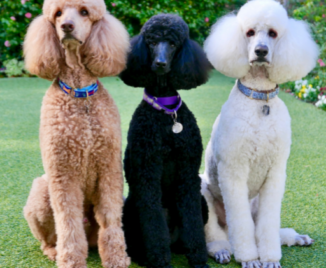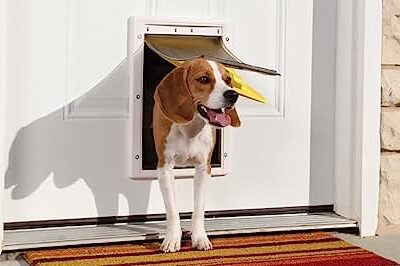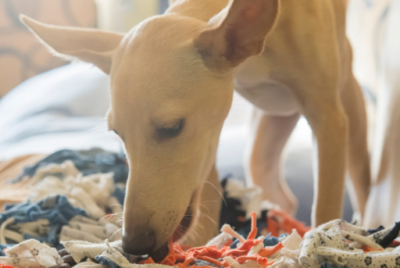Dog Litter Box – Discover the Benefits
Introduction
I have always been passionate about dogs and finding the best solutions to make their lives easier and more enjoyable. As a dog enthusiast and advisor, I firmly believe that using a dog litter box can be a game-changer for both pet owners and their furry companions. In this article, I will discuss the benefits of a dog litter box, provide helpful suggestions, and explain why I think it’s a great option for dog owners.
What is a Dog Litter Box?
Before we dive into the benefits and suggestions, let’s understand what a dog litter box is. Similar to a cat litter box, a dog litter box is a designated area where dogs can relieve themselves indoors. It typically consists of a shallow tray or container filled with a suitable litter material that absorbs liquid waste.
Benefits of Using a Dog Litter Box
Convenience and Time Saving
One of the primary benefits of a dog litter box is the convenience it offers. For pet owners who live in apartments, high-rise buildings, or areas with limited outdoor access it provides a practical solution. It eliminates the need for constant walks and allows dogs to relieve themselves whenever nature calls, even when their owners are busy or unable to take them outside.
Hygiene and Cleanliness
Another significant advantage of a dog litter box is the enhanced hygiene and cleanliness it provides. By containing waste in a designated area, it helps maintain a clean living space for both the dog and the owner. The litter material used in the box absorbs liquid waste effectively, preventing the spread of odors and potential messes.
Indoor Potty Training Solution
A dog litter box can also serve as an excellent indoor potty training tool. It provides dogs with a consistent and accessible spot to relieve themselves, making the training process easier and more efficient. With positive reinforcement and consistent use, dogs quickly learn to associate the litter box with the appropriate place for their bathroom needs.
Odor Control
One common concern with indoor dog waste is the associated odors. However, with the right dog litter box and proper maintenance, odor control becomes a manageable task. Many dog litter boxes are designed with odor-absorbing or odor-neutralizing features, keeping your living space fresh and free from unpleasant smells.
Choosing the Right Dog Litter Box
Size and Design
When selecting a dog litter box, it’s essential to consider the size and design that best suits your dog’s needs. The box should be large enough for your dog to comfortably turn around and squat. Additionally, choose a design that allows easy entry and exit for your dog, especially if they have mobility issues or are small in size.
Material and Durability
The material and durability of the dog litter box are crucial factors to ensure its longevity. Look for sturdy materials that can withstand regular use and cleaning. Plastic or heavy-duty resin options are commonly preferred due to their durability and ease of maintenance.
Accessibility and Ease of Cleaning
Opt for a dog litter box that is easy to access and clean. Removable trays or liners simplify the cleaning process and help maintain the box’s hygiene. Additionally, choose a box with smooth surfaces that are simple to wipe or rinse off, ensuring no residue or odors are left behind.
Training Your Dog to Use a Dog Litter Box
Introducing the Litter Box
Introducing your dog to the litter box requires patience and positive reinforcement. Start by placing it in an easily accessible area and encouraging your dog to explore it. Gradually transition from outdoor bathroom breaks to using the litter box indoors. Remember to reward your dog with treats and praise when they successfully use the box.
Positive Reinforcement
Positive reinforcement plays a vital role in training your dog to use a litter box consistently. Whenever your dog uses the litter box correctly, reward them with treats, verbal praise, or a favorite toy. This positive association will encourage them to repeat the behavior.
Consistency and Patience
Consistency is key when it comes to dog litter box training. Establish a routine and take your dog to the box at regular intervals, especially after meals, playtime, or waking up from naps. Be patient with your dog’s learning process and avoid scolding or punishing them for accidents outside the box. Instead, redirect their attention and gently guide them back to the litter box.
Maintenance and Cleaning Tips
Scooping and Waste Disposal
Regular scooping is crucial to maintain cleanliness and prevent odor buildup. Remove solid waste from the litter box promptly using a scoop or waste bag. Dispose of the waste in an appropriate manner, following local regulations and guidelines.
Regular Cleaning and Sanitizing
In addition to scooping, it’s important to clean and sanitize the litter box regularly. Empty the litter material, wash the tray with mild soap or pet-friendly cleaners, and rinse thoroughly. Allow it to dry completely before refilling it with fresh litter material.
Odor Elimination Techniques
To combat odors effectively, consider using litter materials specifically designed to neutralize or absorb smells. Some litter options contain activated carbon or baking soda, which help eliminate odors naturally. Additionally, placing an air freshener or using odor-neutralizing sprays in the surrounding area can contribute to a fresher environment.
Common Challenges and Troubleshooting
Accidents outside the Litter Box
If your dog has accidents outside the litter box, it’s important to investigate the underlying causes. Possible reasons include inadequate litter box size, infrequent cleaning, medical issues, or stress. Address these factors and consult with a veterinarian or professional dog trainer if necessary.
Reluctance to Use the Litter Box
In some cases, dogs may initially show reluctance to use the litter box. Patience, positive reinforcement, and troubleshooting any potential issues are key to overcoming this challenge. Consider adjusting the litter material, providing additional training sessions, or seeking professional guidance if the problem persists.
Transitioning from Outdoor to Indoor Potty
For dogs accustomed to outdoor potty breaks, transitioning to an indoor litter box may require time and patience. Gradually reduce outdoor access while increasing the use of the litter box. Monitor your dog closely during this transition period and reinforce positive behavior to facilitate the adjustment.
Dog Litter Box Alternatives
Indoor Grass Pads
Indoor grass pads offer a natural feel and texture for dogs accustomed to outdoor grass. They typically feature an absorbent layer beneath the grass surface to contain liquid waste. Indoor grass pads are a viable alternative to dog litter boxes, especially for dogs who prefer the sensation of grass.
Pee Pads and Pee Post
Pee pads are disposable absorbent pads designed for indoor use. They are particularly useful for small or toy breeds. Pee posts, on the other hand, are vertical structures that simulate outdoor marking. Both options provide alternative solutions for dogs who struggle with litter box training.
Artificial Turf Systems
Artificial turf systems mimic the feel of real grass while offering superior durability and easy maintenance. They often consist of a synthetic grass surface with a built-in drainage system. These systems can be installed indoors or on balconies, providing a long-lasting potty area for your dog.
Conclusion
In conclusion, a dog litter box can be a beneficial addition to your home for numerous reasons. It offers convenience, promotes hygiene, aids in potty training, and helps control odors. By choosing the right one, training your dog consistently, and maintaining proper cleanliness, you can create a comfortable and stress-free environment for both you and your furry companion.
FAQs
Q1: Can I use a dog litter box for all dog breeds and sizes?
Yes, dog litter boxes are available in various sizes and designs to accommodate different dog breeds and sizes. Ensure you choose a box that provides ample space for your dog to comfortably use it.
Q2: How often should I clean the dog litter box?
Regular cleaning is essential to maintain hygiene and prevent odors. Scoop solid waste daily and clean the litter box thoroughly at least once a week, or as needed.
Q3: What type of litter material should I use?
There are various litter materials available, including paper-based, wood-based, and silica-based options. Choose a material that is absorbent, easy to clean, and suitable for your dog’s preferences.
Q4: Can I train an adult dog to use a litter box?
Yes, adult dogs can be trained to use one. However, the training process may take longer compared to training a puppy. Patience, consistency, and positive reinforcement are key during the training period.
Q5: Are dog litter boxes suitable for apartment living?
Absolutely! Dog litter boxes are particularly beneficial for apartment dwellers or those living in areas with limited outdoor access. They provide a convenient and hygienic indoor potty solution for dogs.




